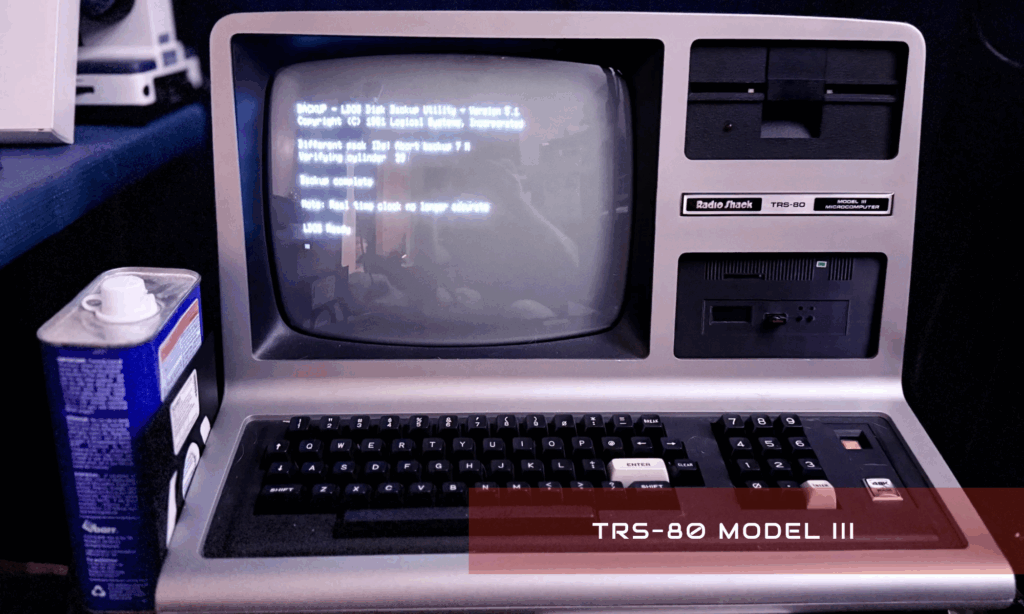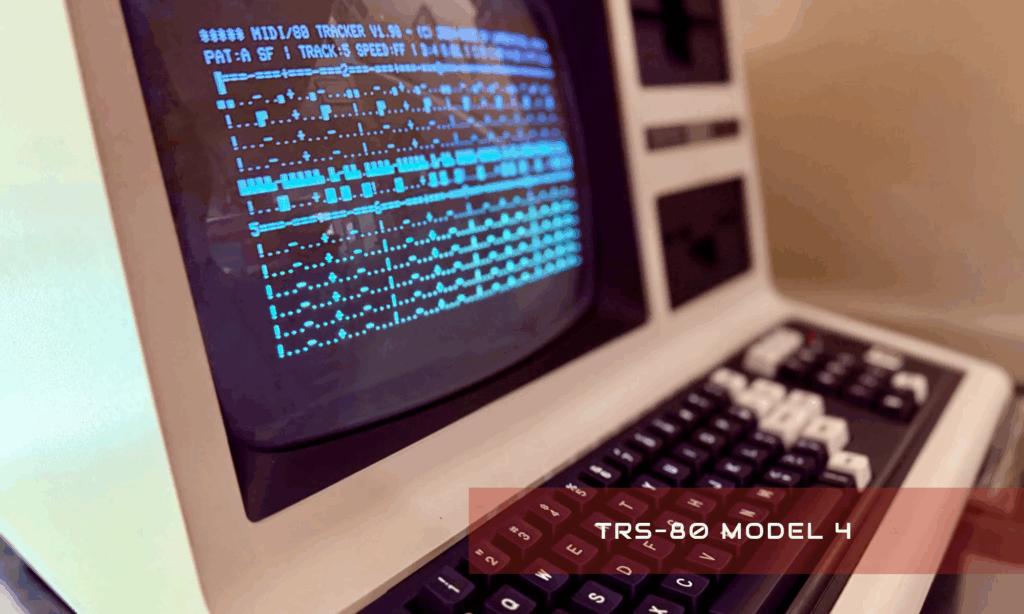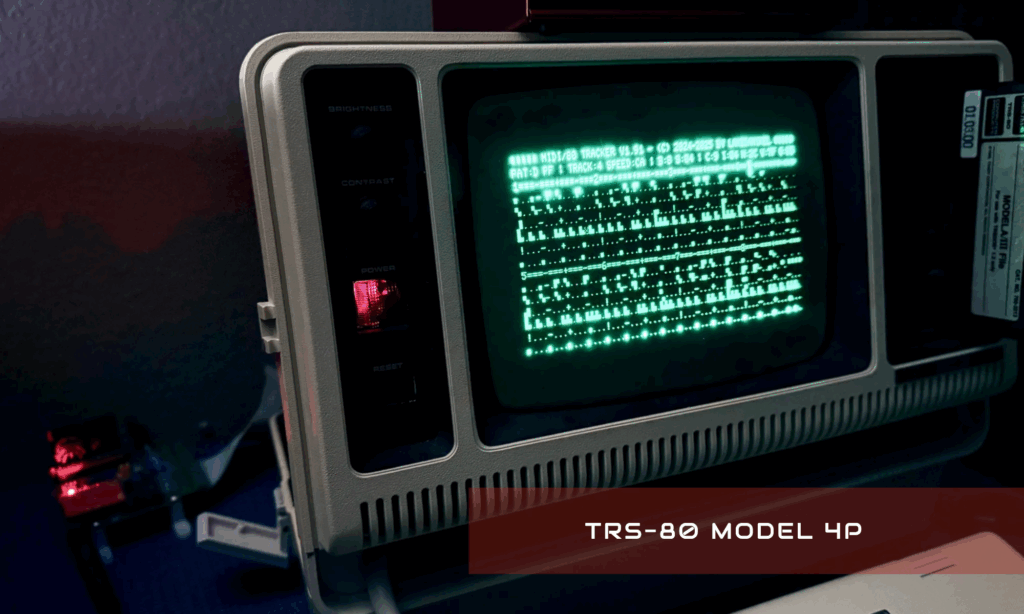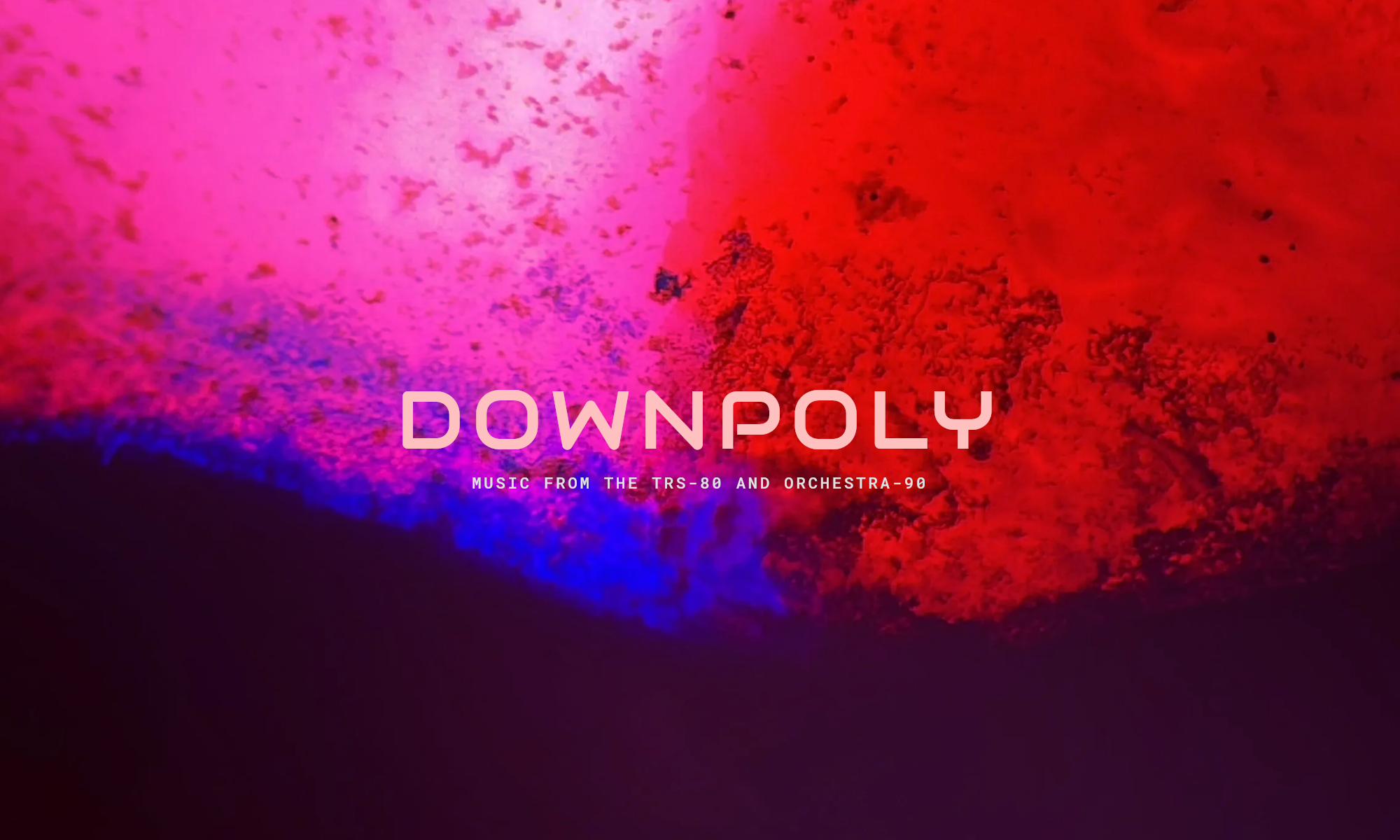… a play on words that represents the creative constraints of this music. The Stereo Orchestra Organ used in this work is limited in polyphony to a single note on each bank at any time. This limitation of a 2-note polyphony brought on the name by going down in poly….. Downpoly.
What is Downpoly?
Downpoly is forging a fresh musical path by transforming the often-overlooked and undervalued Tandy/RadioShack TRS-80 computer into a powerful sound creation tool. This project breathes new life into these iconic machines, demonstrating their potential to create a rich and unconventional palette of sounds. Downpoly’s work is not merely a statement but a testament to the TRS-80’s capabilities, opening doors for both classic and experimental music creation.
At the heart of Downpoly’s setup are the RadioShack TRS-80 microcomputers, augmented by two key attachments: the Orchestra-90 and the custom-designed MIDI/80. Developed by George Phillips and Michael Wessel, the MIDI/80 provides essential MIDI input and output capabilities, connecting the vintage TRS-80 to modern musical instruments and software. One integral part of their setup is the Stereo Orchestra Organ, a custom 2-row, single-octave keyboard. It leverages the TRS-80’s built-in keyboard to control a 2-note software organ, transmitting real-time data to the external Orchestra-90 attachment. The Orchestra-90, a stereo music synthesizer, generates sine, saw, square, and triangle waveforms, with adjustable volume and waveform selection via specialized software.
The audio output from the Orchestra-90 is then sent through a guitar pedal chain for shaping and effects, demonstrating the versatility of the setup. This chain includes a variety of effects like tube pre-amplification, compression, filtering, pitch and wah manipulation, distortion, and stereo effects such as chorus, delay, tremolo, and phasing.
Finally, the signal is routed through various guitar impulse response (IR) mic/amp combinations, yielding a diverse range of sounds from the single TRS-80 machine. This innovative approach allows Downpoly to create a wide spectrum of sounds, from deep, chorused bass guitar amplifier tones to screaming, tube-squashed wah saw waves through a 2×12 Celestion combo. The result is a unique musical experience that showcases the unexpected musical potential of the vintage TRS-80 in a truly compelling way.
The Blog
Check out the latest posts from progress on albums, filming, production and the joys of music with vintage computers.
What is the TRS-80?
TRS-80 Models III, 4, and 4P:
The TRS-80 Micro Computer System was an early line of personal computers from Tandy Corporation, sold through Radio Shack. The name combines “Tandy Radio Shack” and “Z80”, the model of its microprocessor. The original TRS-80 became known as the Model I. The line evolved to include the Model III, Model 4, and Model 4P.

- Released: July 26, 1980.
- Design: All-in-one unit with built-in keyboard, monitor, and disk drives.
- Processor: Zilog Z80A @ 2.03 MHz.
- Memory: 4-48 KB RAM / 4-14 KB ROM.
- Improvements: Included built-in lowercase, a better keyboard, enhanced character set, real-time clock, faster cassette interface, and a quicker processor compared to the Model I.

- Released: April 26, 1983.
- Design: Desktop unit with a 12-inch display. It was notably white, unlike the Model III’s grey.
- Processor: Zilog Z80A @ 4 MHz (operates at 2 MHz in Model III mode).
- Memory: 64 KB RAM, expandable to 128 KB.
- Display: Supported 80 x 24 or 64 x 16 modes, or double-width characters.
- Features: Expanded keyboard with function keys, TRSDOS 6, Microsoft BASIC, and CP/M compatibility.
- Connectivity: Supported cassette operation, a parallel print port, an RS-232C serial port, and a buffered input/output bus.
Model 4P

- Released: November 15, 1983.
- Design: A portable version of the Model 4 with a 9-inch display.
- Features: Included most Model 4 features, but lacked external floppy drive support and a cassette tape interface.
- Drives: Came with two internal 180KB drives.
- Display: Monochrome white/green-screen.
Music applications and limitations
The TRS-80 had limited built-in sound, but third-party developers created music add-ons:
- Orchestra-80/90: Popular stereo music synthesizers that added four voices over a six-octave range. Orchestra-80 included a synthesizer, a music language compiler, and other tools.
- DIY Music: Users found creative ways to generate sound, like causing radio interference or controlling the cassette interface for sound effects.
- MIDI Support: Later custom hardware added polyphonic MIDI support. 😀
Hardware limitations for music production
Despite add-ons, the TRS-80’s hardware limited music production:
- Limited Memory: Small RAM 16-128k limited complexity.
- Slow Processor: The Z80 was slow (2-4MHz) for complex calculations.
- Basic Sound: Built-in sound was primitive/limited.
- Monochrome Display: Limited visual representation of real-time music data.
